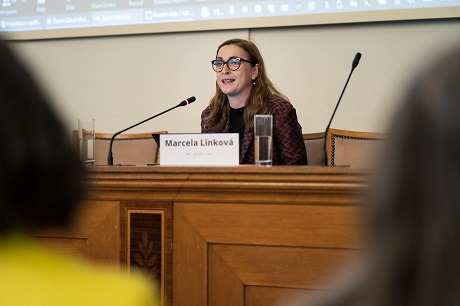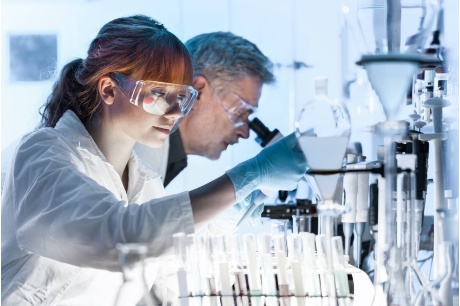
What’s the situation of women in science in the Czech Republic today?
11. 02. 2023
The International Day of Women and Girls in Science, which falls on 11 February, aims to promote gender equality in science. However, the proportion of female researchers in the Czech Republic is consistently among the lowest in the entire EU. In 2020, it was only 27%. Regarding Czech academia, while there are more female university lecturers than men, only 15% of professors are women. The situation is also unsatisfactory in terms of representation in decision-making bodies in research. For example, only 7% of women serve as directors of public research institutions.
Although the total number of researchers in the Czech Republic is growing, the representation of women is stagnating. According to the latest monitoring report on the position of women in science conducted by the Centre for Gender and Science (NKC), men are predominant in all research professions. Despite the situation, the NKC, which falls under the Institute of Sociology of the CAS, is the only specialised centre in Central and Eastern Europe that focuses on advancing gender equality in research and higher educations institutions.
Gender-based violence vs safety, respect, and inclusivity
The NKC also participated in the 2022 Czech Presidency of the Council of the EU by organising an international conference on gender-based violence in academia. “The first mapping of national policies on gender-based violence in research showed that the situation in the European Union is fragmented. Few countries have adapted appropriate measures, and the situation is more dire in Central and Eastern Europe,” Marcela Linková, the head of the Centre, commented in the January issue of the CAS e-magazine, AB / Academic bulletin.
Gender-based violence (GBV) is also crucial for understanding gender inequality in science as a whole. According to the results of the European UniSAFE report, which the NKC also participates in, up to 66% of women in academia have experienced gender-based violence and harassment. Those affected are then often unable to pursue their studies or research with their initial level of enthusiasm, feeling threatened and uncomfortable. As a result, it is more likely for them to leave academia completely. In light of these findings, the Centre for Gender and Science has put together an informative campaign on safety and respect in the academic environment.

Marcela Linková is the head of the Centre for Gender and Science (NKC), which promotes gender equality in research and higher education institutions. (CC)
Wasted potential
Gender inequality in research can be perceived as a phenomenon that ultimately hinders advancements in science as a whole. “Although the majority of university graduates are women, they are very underrepresented in science. We are not utilising the potential of half of the population, which is something we cannot afford to do,” said Helena Langšádlová, Minister for Science, Research and Innovation, at a conference last June that focused on gender in science.
“For example, there is a strong prejudice against female researchers who have children. According to many, they will never be 100% committed to science and will not achieve such results because of motherhood,” Marcela Linková pointed out at the same conference one of the obstacles that female researchers must overcome. In addition, the balancing of gender representation is, according to many, linked to the forced implementation of quotas.
Where does the Czech Academy of Sciences stand?
Compared to the rest of the country, the Czech Academy of Sciences finds itself above average in the percentage of female researchers. However, the absolute numbers of women in management do not look very positive: 26% of women work in leadership positions and only 12% in the top management of our research institutes. However, there is potential for the number of women in management to increase and balance out in the future.
“We have more than 37% of female colleagues in research departments who are university-educated. In the age group of thirty-one to forty years, it’s 40%. At the same time, women in this age range occupy 38% of the leadership positions. 49% of women in the Czech Academy of Sciences are in the under-thirty category, and the same proportion of women in the aforementioned category are in leadership positions,” Luboš Náhlík noted in November 2021 in the AB / Academic bulletin. The Czech Academy of Sciences is also trying to support female researchers in their return to work in their field, for example by offering daycare services (children’s groups).

37% of researchers at the Czech Academy of Sciences are women.
The solution? Changing the criteria and mindset
According to Jiří Ludvík from the J. Heyrovský Institute of Physical Chemistry of the CAS, Czech science would benefit from changing the criteria for evaluating readiness for scientific work: “Resolving gender inequality in science could greatly benefit by having external, professional criteria complemented by internal, personal ones. For instance, parental leave could be considered the equivalent of having completed an intense, practical management course.”
However, as Ondřej Beránek, Vice President of the CAS, pointed out, the changes proposed by Jiří Ludvík are difficult to grasp. “It will ultimately always depend on the people in charge of the relevant panels and committees and how they view these issues,” he noted. He added that the mindset would have to change on the level of institutional leadership. Peter Šebo from the Institute of Microbiology of the CAS believes that specific support programmes could be a significant help in combating gender inequality.
The way in which grants are awarded is already taking into account the issue of inequality in science as well. For instance, starting this year, the Czech Science Foundation now requires a gender equality plan as one of the factors for the evaluation of grant applications.
The International Day of Women and Girls in Science, which falls on 11 February, highlights the important role of female researchers for science and society. It was declared by the United Nations General Assembly in December 2015 to promote the full and equal access and participation of women in STEM fields.
Prepared by: Zuzana Dupalová, Division of External Relations, CAO of the CAS
Photo: Shutterstock; Jana Plavec, Division of External Relations, CAO of the CAS
 The text and photos marked CC are released for use under the Creative Commons license.
The text and photos marked CC are released for use under the Creative Commons license.
Read also
- A trapped state: The pandemic impact on public attitudes, trust, and behavior
- Aerial archaeology: Tracing the footsteps of our ancestors from the sky
- Archaeologists uncover ancient finds along Prague Ring Road
- Our microbiome largely depends on what we eat, says microbiologist Michal Kraus
- The ABCs of writing: Why did its invention mark a turning point for humankind?
- We learn, remember, forget… What can memory actually do? And can we outsmart it?
- New Center for Electron Microscopy in Brno opens its doors to global science
- The hidden lives of waste: What can we learn from waste workers and pickers?
- A unique lab is hidden right beneath Prague’s Vítkov Hill
- Renewables are a strategic investment in European security, scientists say
The Czech Academy of Sciences (the CAS)
The mission of the CAS
The primary mission of the CAS is to conduct research in a broad spectrum of natural, technical and social sciences as well as humanities. This research aims to advance progress of scientific knowledge at the international level, considering, however, the specific needs of the Czech society and the national culture.
President of the CAS
Prof. Eva Zažímalová has started her second term of office in May 2021. She is a respected scientist, and a Professor of Plant Anatomy and Physiology.
She is also a part of GCSA of the EU.